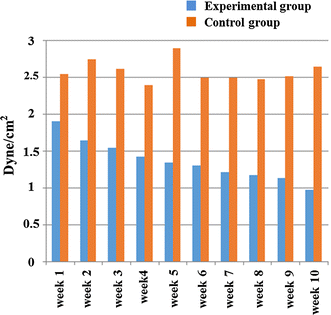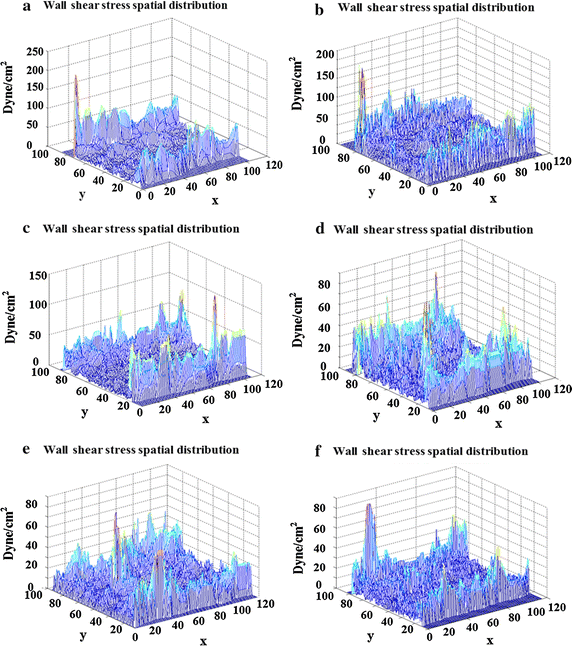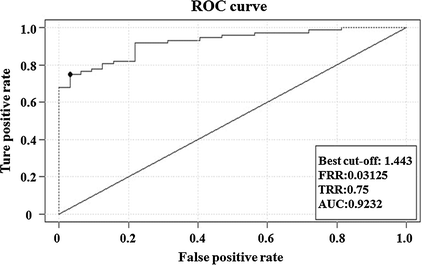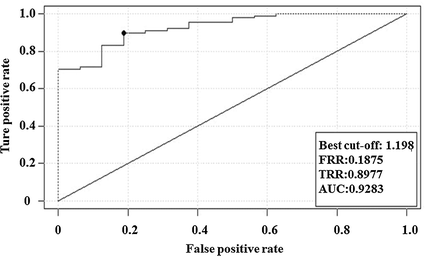Correlation between quantitative analysis of wall shear stress and intima-media thickness in atherosclerosis development in carotid arteries
- PMID: 29208019
- PMCID: PMC5718157
- DOI: 10.1186/s12938-017-0425-9
Correlation between quantitative analysis of wall shear stress and intima-media thickness in atherosclerosis development in carotid arteries
Abstract
Background: This paper presents quantitative analysis of blood flow shear stress by measuring the carotid arterial wall shear stress (WSS) and the intima-media thickness (IMT) of experimental rabbits fed with high-fat feedstuff on a weekly basis in order to cause atherosclerosis.
Methods: This study is based on establishing an atherosclerosis model of high-fat rabbits, and measuring the rabbits' common carotid arterial WSS of the experimental group and control group on a weekly basis. Detailed analysis was performed by using WSS quantification.
Results: We have demonstrated small significant difference of rabbit carotid artery WSS between the experimental group and the control group (P<0.01) from the 1st week onwards, while the IMT of experimental group had larger differences from 5th week compared with the control group (P<0.05). Next, we have shown that with increasing blood lipids, the rabbit carotid artery shear stress decreases and the rabbit carotid artery IMT goes up. The decrease of shear stress appears before the start of IMT growth. Furthermore, our receiver operator characteristic (ROC) curve analysis showed that when the mean value of shear stress is 1.198 dyne/cm2, the rabbit common carotid atherosclerosis fatty streaks sensitivity is 89.8%, and the specificity is 81.3%. The area under the ROC curve is 0.9283.
Conclusions: All these data goes to show that WSS decreasing to 1.198 dyne/cm2 can be used as an indicator that rabbit common carotid artery comes into the period of fibrous plaques. In conclusion, our study is able to find and confirm that the decrease of the arterial WSS can predict the occurrence of atherosclerosis earlier, and offer help for positive clinical intervention.
Keywords: Carotid artery; Fibrous plaques; Intima-media thickness; Receiver operator characteristic; Wall shear stress.
Figures







References
-
- Mas JL. Prevention of cerebral infarct caused by atherosclerosis. Arch Des Maladies Du Coeur Et Des Vaisseaux. 1998;91 Spec No 5:65–73. - PubMed
-
- Frerix M, Stegbauer J, Kreuter A, Weiner SM. Atherosclerotic plaques occur in absence of intima-media thickening in both systemic sclerosis and systemic lupus erythematosus: a duplexsonography study of carotid and femoral arteries and follow-up for cardiovascular events. Arthritis Res Ther. 2014;16(1):1–17. doi: 10.1186/ar4489. - DOI - PMC - PubMed
MeSH terms
Substances
Grants and funding
LinkOut - more resources
Full Text Sources
Other Literature Sources
Medical
Research Materials

